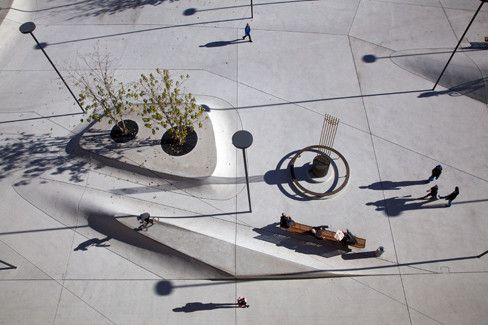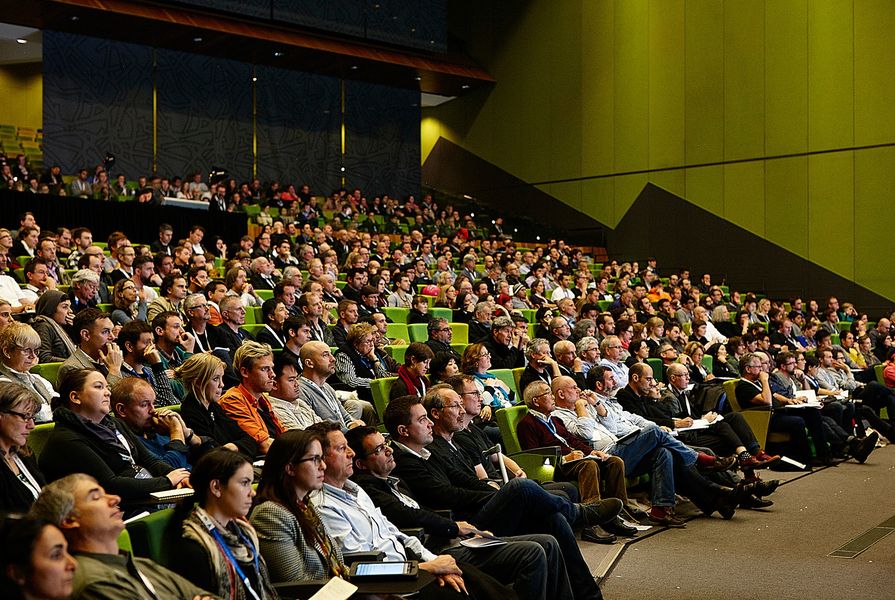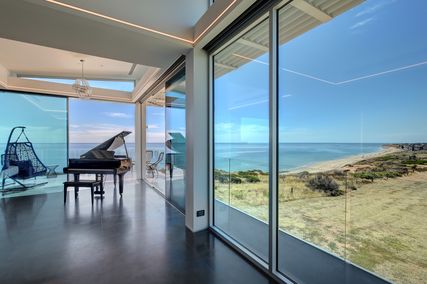There is something about being a foreigner. You have left your world behind and what would normally be a “no” becomes a “why not? What next?” Stuff happens when you’re out of your comfort zone. What happens in Melbourne stays in Melbourne.
I’ve been asked a few times what I thought about the 2013 National Architecture Conference; what I liked best. What I liked best was being there. I hadn’t done any research beforehand and knew little about the speakers. At some level I didn’t care – I just wanted to go to the conference. There was an element of trust of course. As this was a curated event, the creative directors were key. Sandra Kaji-O’Grady and John de Manincor had an elegant and simple curatorial strategy, with the whole event fitting comfortably on an A4 page. The theme, Material, was simple enough to mean something to everyone while being open to interpretation. It was broad enough to incorporate disparate voices and evocative enough to generate sparks.
The structure was simple. Only keynote speakers, thoughtfully coupled in pairs, with formalities kept to a minimum. There were surprises. Carey Lyon moved me (the last thing I expected), the bricklaying flying robots amazed, the 3-D printer-hacker astounded. The sensualists, perhaps, were under-represented, though Austrian architect Kathrin Aste wins the prize for most beautiful project (Eduard Wallnöfer Platz). What linked them all was rigour; pursuing an idea, technology or material possibility to its natural conclusion.

LAAC’s Eduard Wallnöfer Platz presented by Kathrin Aste.
Happily, the Australians held their own. Emma Young from PHOOEY presented a delightful array of up-cycled inventiveness. Tim Greer of TZG and Carey Lyon of Lyons eloquently amplified the Sydney/Melbourne dichotomy, though a visit to Meyers Place later that evening really got to the crux of it. The conditions are different here. Licensing laws, urban morphology, cultural confidence, appetite for risk. When will city-makers learn that it is the conditions they need to worry about, not controlling outcomes. Where there are fish the sharks will swim.
Mid-conference I had something of a revelation. I was inspired to make a comment during a dull presentation so I leaned over and asked the colleague beside me if she could teach me how to tweet (thanks Tania), and within minutes I was throwing popcorn round the room. It felt so deliciously naughty, like passing notes under the school desk.
Through subsequent sessions I started to notice Twitter types. There was the plant who would politely summarize presenters’ comments like a court stenographer on the take. There was Mr Middle-ground, with one eye on the political implications of each character. So polite! And then there were the incorrigibles like my co-conspirator and I. It was loads of fun but there was also the feeling that I wasn’t 100 percent there, a bit like when you travel then panic because you left your camera in the hotel room and without it, like, what’s the point? All in all it was a revelation, a naughty pleasure of which I’m not sure if I should feel slightly ashamed. Dutifully, I washed my hands afterwards.
The finish to such an elegant, clean and well-constructed two days was hilarious. The ambition was certainly not in doubt. There were thirteen speakers on stage, two creative directors, one chair, sixteen shots of whiskey and an unedited stream of audience tweets and texts projected behind the speakers such that the audience could read them and occasionally snigger, but the speakers could not – they were left perplexed at times by the audience reaction.
The comments began as earnest questions, in the hope, perhaps, that they might actually get asked. They quickly became comment before falling into sarcasm. Our super-capable chair, Nader Tehrani (why didn’t he have a keynote slot? What a talent!), tried to cut a clear line through the fog by attempting to create a little conflict among the dissonant ideological positions on stage (the world of form versus the world of performance) but it came to nought. In the end it was compelling viewing. Like a car crash. Saved by the (second) bell. Phew!
All in all it was a marvellous, thought-provoking and challenging weekend, and I’m already looking forward to the next one.
Other coverage of the 2013 National Architecture Conference here.

















